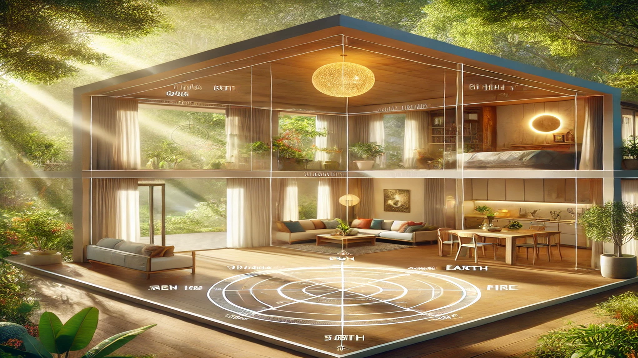Everyone envisions their dream home as a perfect blend of comfort and aesthetics, creating a space to feel both proud and at peace.
However, a home is more than just beautiful interiors. The architectural design and its alignment with well-thought-out principles are crucial for promoting the health and happiness of its inhabitants.
Rooted in ancient Indian traditions, Vastu Shastra is a system that provides guidelines for designing harmonious living and working spaces. These principles focus on creating environments that harness positive energies while minimizing negative influences. By following Vastu, one can optimize their living space to align with the universe’s natural energies.
If you’re not familiar with Vastu Shastra but dream of creating a home that radiates positivity, here are some essential tips to consider:
1. Sunlight and Ventilation
According to Vastu Shastra, homes that receive ample sunlight, especially in the morning, are filled with positive energy. Morning sunlight is believed to promote physical and mental well-being, while adequate ventilation ensures the free flow of fresh air, further contributing to a healthy atmosphere. Insufficient sunlight, on the other hand, can lead to stagnant and negative energy.
2. Main Entrance Orientation
The main entrance of a home is a critical aspect in Vastu Shastra. It is seen as the gateway for energies—both physical and spiritual—entering the house. Directions such as northeast, north-north, southeast, or west-west are considered auspicious and can bring growth and positivity to the household.
3. Kitchen Placement
The kitchen is regarded as a vital part of any home, as it is the source of nourishment. Vastu links the kitchen to the element of fire, which symbolizes energy and vitality. Ideally, the kitchen should be located in the southeast corner of the house, where sunlight is strongest, ensuring both practicality and alignment with natural energy. Additionally, the dining area should be placed near the kitchen but away from the main entrance.
4. Prayer or Meditation Space
For spiritual well-being, Vastu recommends dedicating the northeast corner of the house to prayer or meditation, regardless of one’s faith. This corner is believed to be the most conducive for connecting with divine energy and fostering inner peace.
5. Room Shapes and Layout
Vastu Shastra emphasizes the importance of square or rectangular rooms to maintain harmony and balance. While circular designs may appear stylish, they are considered less favorable in Vastu. Linear layouts and straight edges are recommended for optimal energy flow and alignment.
6. Harmony with Natural Elements
Vastu encourages balancing the five fundamental elements of nature—sun, earth, wind, fire, and water—in your living space. This harmony promotes peace, prosperity, and a healthy coexistence with the environment.
Incorporating Vastu Shastra into your home design is more than a choice; it is a pathway to cultivating a tranquil and thriving living space. By aligning with nature’s energy and respecting its gifts, you can create a home that truly supports your well-being and fosters positive growth.


Leave a Reply